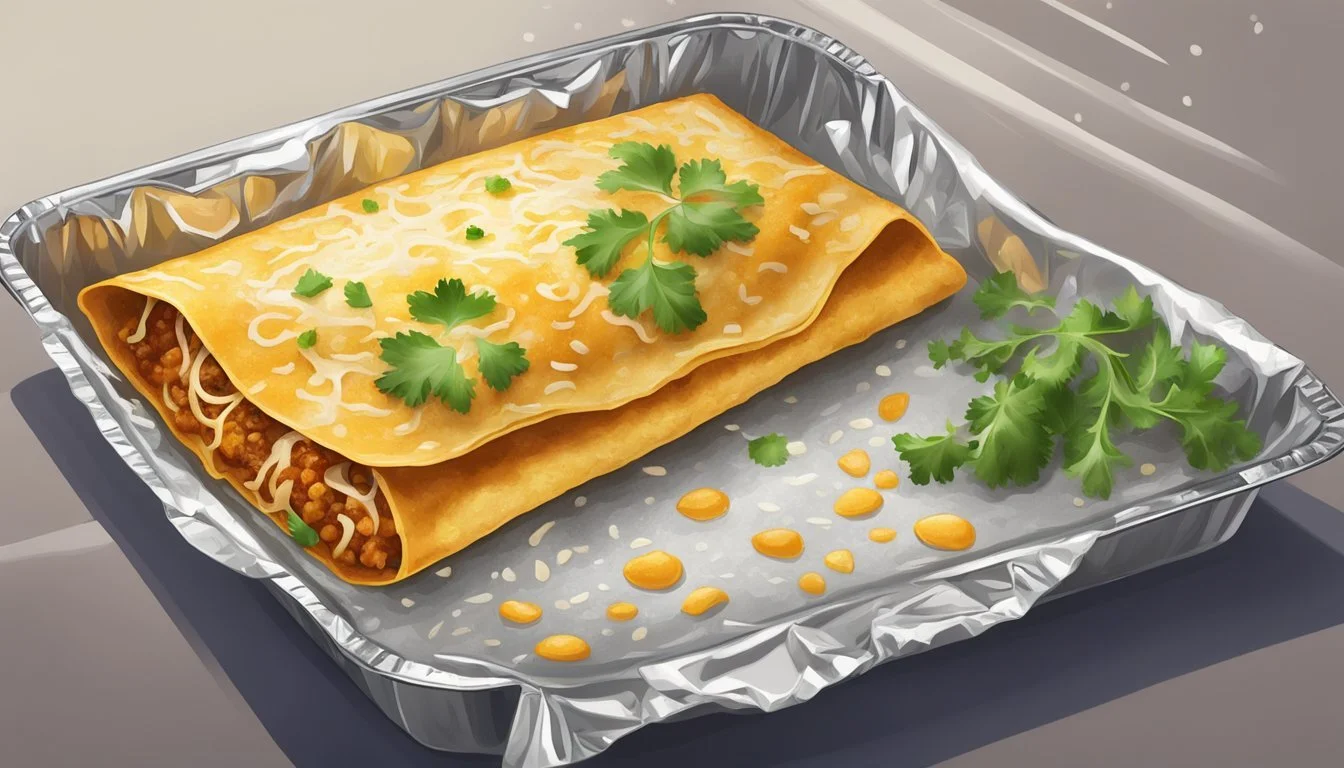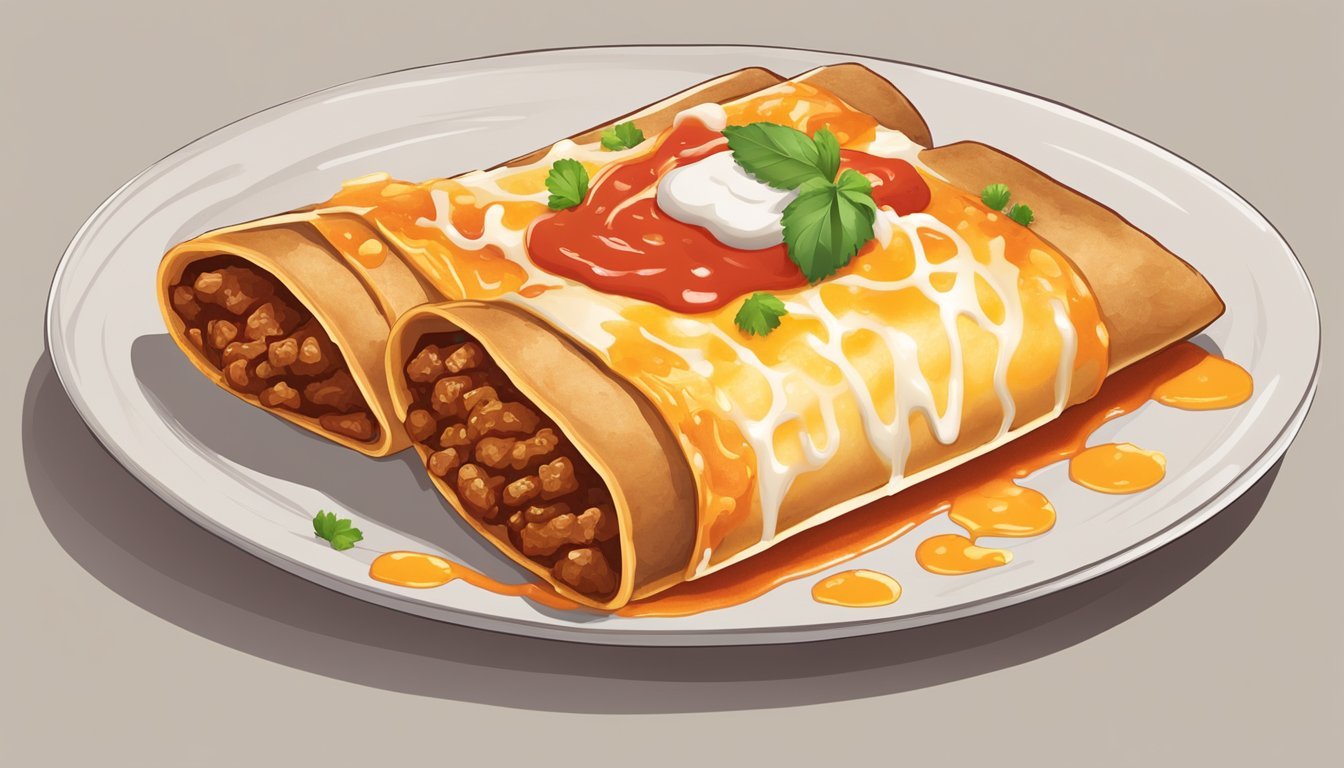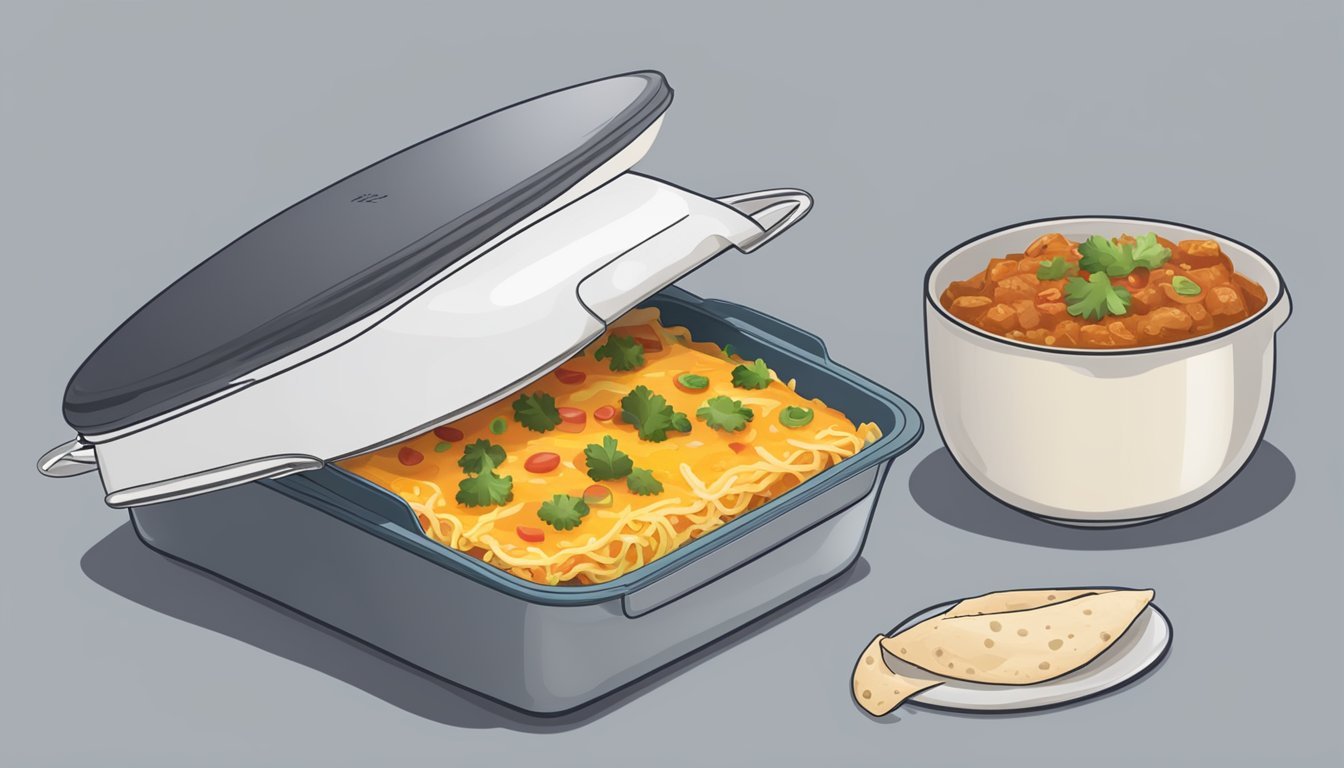Best Way to Reheat a Beef Enchilada
Keeping the Tortilla Crisp
When it comes to reheating beef enchiladas (What wine goes well with beef enchiladas?), the challenge is to warm them thoroughly without compromising the texture of the tortilla. The key lies in selecting a method that balances the need for heat with the preservation of the enchilada's structure and moisture. Traditional wisdom suggests that a gentle warming approach, rather than a high-intensity blast, is more likely to reward diners with an enchilada that tastes as good as when it was first served.
Several techniques can be employed to heat beef enchiladas effectively. Utilizing a skillet with minimum oil can crisp the bottom of the enchiladas and offer a pleasantly textured contrast to the soft interior. The moderate application of heat in a toaster oven or traditional oven, often covered with foil to retain moisture, provides an even and consistent warming environment. Each method has its merits, and the best way to reheat enchiladas varies depending on the tools at hand and personal preference. It's important to monitor the enchiladas during reheating to ensure that they reach the desired temperature without the edges turning brittle or the tortilla becoming soggy.
Understanding Enchiladas
When discussing the best ways to reheat an enchilada, it's important to first grasp what an enchilada is and the elements that contribute to its taste and texture.
Components of an Enchilada
An enchilada is traditionally made of three core components: a corn tortilla, a savory filling, and a spicy enchilada sauce. The tortilla is a soft and flexible flatbread that acts as the base for the enchilada. It is typically rolled or folded to encase the filling. The sauce, made with chili peppers and other spices, is poured over the assembled enchiladas before they are baked.
Texture and Flavor Considerations
The texture of the tortilla is critical; it should be pliant yet sturdy enough to hold the filling and sauce. Cheese is often sprinkled on top of the sauce, providing a gooey texture and rich flavor when melted. The sauce should add moisture but not to the extent that it makes the tortilla soggy. Achieving the right balance of moisture while reheating without compromising the tortilla's integrity is essential.
Typical Enchilada Fillings
Fillings can vary widely but are typically a combination of proteins and vegetables. Common fillings include ground beef, shredded chicken, and cheese enchiladas for vegetarians. The goal is to reheat the enchilada in a way that warms the filling thoroughly without drying it out or letting the sauce soak through the tortilla, rendering it mushy. Whether you are reheating homemade enchiladas or store-bought ones, preserving the original flavors of the recipe is key.
Storing Leftover Enchiladas
Proper storage is crucial to maintain the freshness and prevent sogginess of leftover enchiladas. Whether choosing to refrigerate or freeze, certain techniques ensure enchiladas remain as delicious as when they were first served.
Refrigeration Best Practices
Leftover enchiladas should be placed in the refrigerator within two hours of cooking to prevent bacterial growth. They should be stored in an airtight container or wrapped tightly with aluminum foil or plastic wrap to preserve moisture and flavor.
Shelf Life: Cooked enchiladas last in the refrigerator for 3-5 days.
Avoiding Sogginess: Minimize sogginess by separating layers with parchment paper.
Freezing and Defrosting Techniques
To extend the shelf life of enchiladas, one can freeze them:
Pre-Freeze: Single enchiladas can be pre-frozen on a baking sheet to avoid sticking.
Wrap and Freeze: Wrap individual enchiladas in foil, then place in a freezer bag or airtight container.
Labeling: Always label the container with the date to keep track of storage time.
Defrosting Frozen Enchiladas:
Refrigerator Method: Thaw overnight in the fridge, ensuring they maintain texture.
Microwave Method: Use the defrost setting to thaw enchiladas if they're going to be consumed immediately.
Freezer Shelf Life: Frozen enchiladas can last 2-3 months if stored properly. When reheating, ensure they reach an internal temperature of 165°F for safe consumption.
Pre-Reheating Considerations
Before reheating a beef enchilada, the diner should carefully select a method to maintain the quality of the tortilla. Addressing how to avoid sogginess is fundamental to restoring the enchilada's original texture and flavor.
Choosing the Right Reheating Method
Different reheating methods impact the texture of beef enchiladas significantly. Here are the primary options:
Oven or Toaster Oven: The even heat distribution in an oven or toaster oven can maintain the enchilada's texture efficiently. Preheating to 350°F and reheating for 10-25 minutes, depending on the number of enchiladas, is advised.
Microwave: A microwave offers convenience but risks making the enchilada tortilla soggy due to the steam it creates. Short bursts of heat and a lower power setting can help mitigate this.
Skillet: This method can crisp the tortilla's exterior, enhancing texture. Heat the skillet to a medium-high temperature and carefully warm the enchiladas for a few minutes on each side.
Air Fryer: Utilizing an air fryer with its basket can provide a crispy finish but should be monitored closely as it can over-dry the tortilla if left too long.
Avoiding Sogginess
To prevent tortilla sogginess, diners should consider the following:
Use aluminum foil when reheating in the oven to protect the tortilla from direct heat initially, then uncover to allow the surface to crisp up in the final minutes.
For microwave reheating, place a damp paper towel under the enchilada to absorb excess moisture.
When using a skillet, a light coating of oil can act as a barrier and keep the tortilla from absorbing too much moisture.
In an air fryer, reheating at a lower temperature for a shorter time with intermittent checking can avoid sogginess while achieving a desirably crisp texture.
Reheating Techniques
When reheating beef enchiladas, the goal is to warm the filling without compromising the texture of the tortilla. Each method offers a balance between retaining moisture and achieving the desired crispness.
Oven Reheating Method
Preheating the oven to 350°F is crucial for an even reheating process. One should wrap the enchiladas in aluminum foil and place them on a baking tray lined with parchment paper. This method typically takes around 10-15 minutes, allowing the heat to slowly penetrate through, ensuring that the corn or whole wheat tortillas don't turn soggy.
Microwave Reheating Method
The microwave offers a rapid solution. It's recommended to place the enchiladas on a microwave-safe plate, cover with a damp paper towel to maintain moisture, and microwave for 1-2 minutes on high power. However, to prevent sogginess, a quick fry in a skillet after microwaving helps crisp up the tortillas.
Skillet Reheating Method
Reheating enchiladas in a skillet with a small amount of oil over medium heat can provide a quick fry to the tortillas, enhancing their texture. It's best to heat the enchiladas for 2-4 minutes on each side, making sure they have enough space in the skillet to avoid steam buildup.
Toaster Oven Reheating Method
A toaster oven is a convenient middle-ground between an oven and a microwave. One should heat the enchiladas around 350°F for 10-15 minutes, depending on their size. An added benefit of this method is that it can give the tortillas a slight crunch while thoroughly warming the filling.
Air Fryer Reheating Method
An air fryer can reheat enchiladas efficiently, using hot air circulation to ensure the tortillas stay crisp. Enchiladas should be reheated at 350°F for about 3-4 minutes. Since air fryers work by circulating hot air, the enchiladas should be placed in a single layer to allow even exposure.
Post-Reheating Enhancements
Once the beef enchilada is heated through, and the tortilla has remained crisp, a few choice enhancements can amplify its flavor and dining appeal.
Adding Fresh Ingredients
Incorporating fresh elements after reheating can significantly enhance the taste and texture of a beef enchilada. Sprinkling chopped cilantro adds a fresh, herby brightness that complements the rich flavors of Mexican food. A dollop of sour cream can provide a cool, tangy contrast to the warm spices, while a generous helping of shredded cheese — such as cheddar or Oaxaca — melted on top adds a layer of creamy goodness.
Serving Suggestions
Presentation and side dishes can turn a simple meal into a feast. Serving the enchilada with sides like Mexican rice or refried beans not only rounds out the plate but also pays homage to authentic Mexican dishes. For a complete meal, consider pairing with tamales or a fresh salad. Plating the enchilada with these sides makes for a visually appealing and satisfying culinary experience.
Safety and Health Recommendations
When reheating a beef enchilada, one not only strives to avoid sogginess but must also prioritize safety to prevent bacterial growth. Ensuring that food is reheated to the proper temperature is essential to minimize the risk of foodborne illnesses.
Avoiding Bacterial Growth
Enchiladas, like most foods, can harbor bacteria if not stored and reheated properly. The following measures should be taken:
Storage: Beef enchiladas should be refrigerated within two hours of cooking. Bacteria grow rapidly between 40°F and 140°F, so prompt refrigeration is critical.
Reheating: Heat the enchiladas to at least 165°F, checking with a food thermometer, to ensure harmful bacteria are killed.
Action Recommendation Refrigeration Cool to room temperature and refrigerate promptly. Thawing Thaw frozen enchiladas in the refrigerator before reheating. Microwaving Cover with a microwave-safe lid and rotate to heat evenly. Oven Heating Reheat in an oven preheated to 350°F until the internal temperature reaches 165°F.
Soggy enchiladas are often the result of excess moisture, but this concern should not overshadow the importance of reheating to a safe temperature. By following these guidelines, one ensures both optimal quality and safety of the enchiladas.
Additional Tips and Techniques
To maintain the quality of leftover or frozen beef enchiladas while reheating, one should focus on techniques that preserve the tortilla's integrity. This includes proper heating methods and considering enchilada's structure.
Ensuring Even Reheating
When reheating beef enchiladas, even distribution of heat is crucial to prevent sogginess.
For frozen enchiladas: It is advisable to thaw them in the refrigerator overnight before heating, which promotes uniform warming.
For microwave reheating: Cover the enchiladas with a microwave-safe lid and heat on medium power in intervals of 30 seconds, checking frequently.
In an oven: Preheat the oven to 350°F, wrap enchiladas in foil, and bake until heated through, around 20 minutes for thawed or refrigerated enchiladas.
Alternative Enchilada Forms
One might want to consider alternative forms of enchiladas, like an enchilada casserole, when looking to reheat without sogginess.
Enchilada Casserole: Being layered, this form heats more uniformly in an oven set to 350°F, typically covered with foil to retain moisture without sogginess.
Equipment: Using a toaster oven or a conventional oven can provide a more controlled and even reheating process than a microwave.
Opt for glass or ceramic baking dishes that distribute heat well and are suitable for both cooking and storing leftovers.
Implementing these tips and techniques will ensure that your beef enchiladas are reheated to a satisfactory warmth and texture, maintaining the dish's intended flavor and consistency.
Summary
Reheating a beef enchilada without making the tortilla soggy involves a few key methods. Microwave reheating can be quick, but one must exercise care to avoid sogginess. Place the enchilada on a microwave-safe plate, cover with a splatter guard, and heat on high for 2 minutes. Checking the enchilada and piercing the tortilla can help distribute the heat evenly.
Using a skillet or frying pan is another effective method. One should heat a small amount of oil and place the enchiladas in the pan, keeping space between them, to cook for 2-4 minutes. This technique helps in crisping the bottom.
A toaster oven or conventional oven can also be used, setting the temperature around 350°F to 375°F. Encasing the enchiladas in a baking dish, covered with foil, and baking for 15-25 minutes preserves moisture and heat penetration. For those desiring crispier tortillas, uncovering in the last 5 minutes of baking achieves this result.
Here are the summarized steps for each method:
Microwave: Cover and heat for 2 minutes; pierce for even heating.
Skillet: Heat oil, cook 2-4 minutes; ensures crispy bottom.
Oven: Bake covered at 350°F-375°F for 15-25 minutes; uncover for last 5 minutes for crispiness.
Each method has its advantages, and one's choice may depend on time constraints and desired texture. The key to success is monitoring the heating process closely and making adjustments based on the enchilada’s warmth and tortilla texture.








